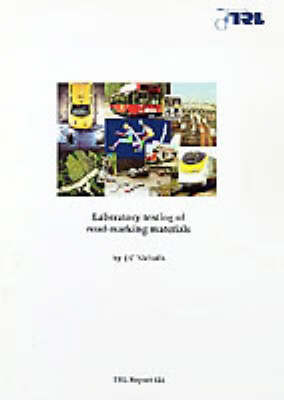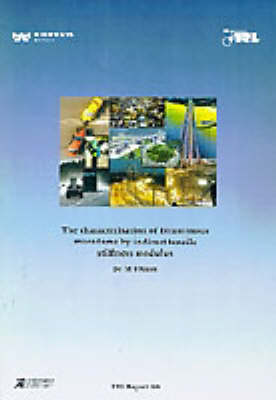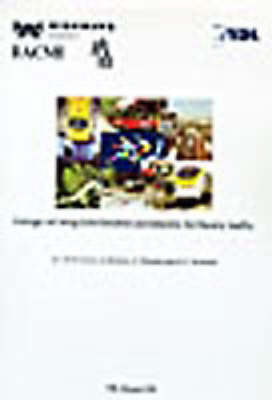TRL report
4 primary works
Book 121
Currently, road marking materials are assessed in the UK and in most other countries using road trials. The need for a repeatable laboratory test that differentiates the quality of road marking material is widely recognised - as it would be both faster and easier to reproduce. This report discusses laboratory tests of typical materials, the conditions of which were adjusted to provide maximum data in the minimum time, and the conclusion that this regime can be used to differentiate between materials. A standardised procedure has been devised on the basis of these tests. Further correlation with performance on the road will be required to validate it properly, but this procedure could be of use as a screening process prior to road trials, thus allowing manufacturers to try out a wider range of products and hence encouraging innovation. It may eventually replace road trials as the standard method of assessing road marking materials.
Book 160
Characterisation of Bituminous Macadams by Indirect Tensile Stiffness Modulus
by M.E. Nunn
Published 17 February 1999
The indirect tensile test (ITT) has been identified as an economic and practical means of measuring the stiffness modulus, or load-spreading ability, of bituminous roadbase. This study aims to provide estimates of stiffness moduli applicable to standard roadbase and basecourse materials used in the UK, and to investigate controversial points that have arisen from the use of the ITT. It considers: the calculation of stiffness modulus using the ITT; the determination of mean stiffness; relationship between stiffness modulus measured using the ITT and measured using a more sophisticated test; relationship between Poisson's ratio and temperature and/or stiffness; the effect of load-pulse shape; and, equivalence of pulse and continuous sinusoidal loading.The issues raised in this report will contribute to the discussion on the standardisation of the ITT, and provide guidance for the setting of target values of stiffness modulus for inclusion in an end-product specification for roadbase and basecourse materials.
Book 250
Design of Long-Life Flexible Pavements for Heavy Traffic
by M.E. Nunn, A. Brown, D. Weston, and J C Nicholls
Published 17 February 1999
Due to an increase in traffic levels over the last 20 years, the costs and disruption of roadworks have increased proportionately. This has led to a re-evaluation of previous standards, and a proposal that a design life of 40 years for heavily trafficked areas should become the new standard. This report reviews design practice and information on flexible pavement performance, and develops an improved design method for heavily trafficked, flexible pavement. design criteria and design concepts. A well constructed pavement, built above threshold strength, will have a very long structural service life provided that distress, in the form of cracks and ruts appearing at the surface, is treated before it begins to affect the structural integrity of the road.
Book 314
Road Trials of Stone Mastic Asphalt and Other Thin Surfacings
by J C Nicholls
Published 10 February 1999
Rising volumes and loadings of road traffic have led to the development of new surfacing materials such as thin surfacings and stone mastic asphalt (SMA). Thin surfacings, used in layers with thicknesses between those of traditional wearing courses and veneer coats, provide, in principle, all the advantages of a surface dressing without the disadvantages of the aftercare service required for surface dressing. This report describes road trials to assess SMA as well as various categories of proprietary thin surface materials which are commonly available in the UK. The results were encouraging and several of the proprietary thin surfacings now have Departmental Type Approval for use on trunk roads and motorways in England.



